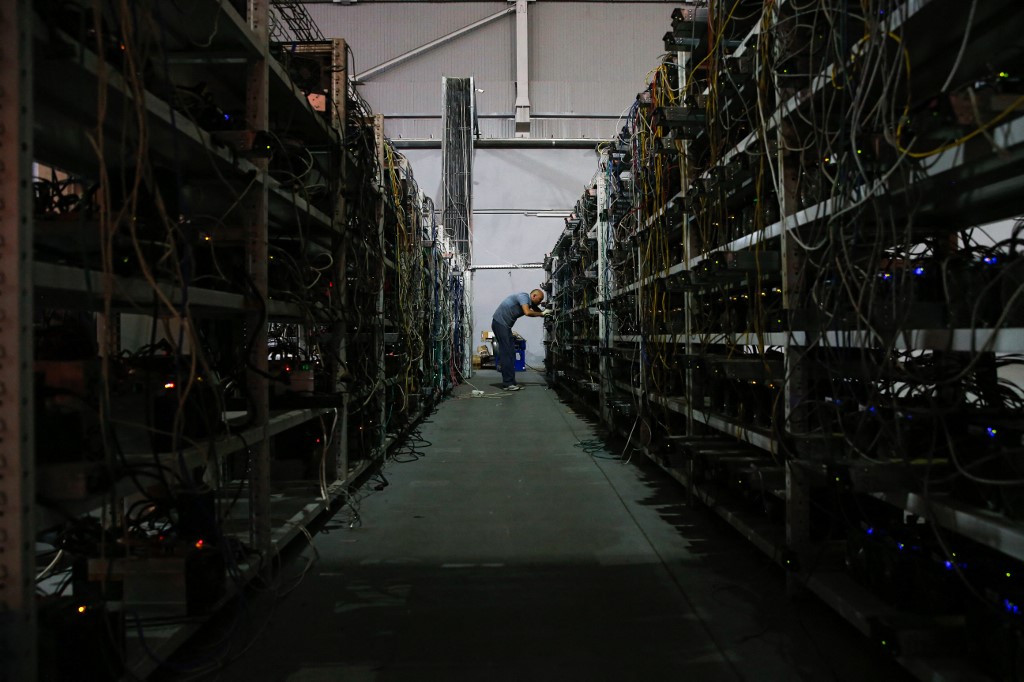Do you ever get the feeling that all the energy has been sucked out of the room? It’s happening right now as you read this; row upon row, computer banks across the planet are churning out as much cryptocurrency as they can, using enough electricity to power entire countries – and not just small ones like Palau (pop. 18,000). Think more like Pakistan (pop. 241 million).
You’ve probably seen something in the crypto headlines about all this energy consumption. And you may have heard from the legion of crypto promoters who vehemently deny there’s any problem. “Bitcoin is actually reducing energy use by forcing people to mine more efficiently,” they say. Well, no, that’s not quite how it works. We’re still burning through hundreds of terawatt-hours of electricity every year to create Bitcoin, Ethereum and all the other digital coins out there on the market.
Having said that, some of the latest developments in cryptocurrency mining show plenty of promise when it comes to sustainability. Let’s dig deep, peel back the layers, and get to know the real story behind the environmental impact of mining cryptocurrency.
What Is Energy?
To really understand what’s going on, let’s step back for a moment and look at energy itself. This is the stuff that drives the world – heat and light, essentially. The Earth’s climate, including all the living creatures on and below the surface, is fueled mostly by radiant energy from the sun.
Being very clever, we humans have found ways to get even more energy out of our surroundings. According to Enerdata, something like 172 petawatt-hours (172 x 10¹⁵ Wh) of energy was generated in 2021, including 28 PWh of the electricity that all these crypto-mining operations run on.
Isn’t Electricity a “Clean” Energy?
Not exactly. Using electricity instead of fossil fuels (stuff like oil and gas, made from decomposed dead organisms – yes, including the dinosaurs) does create far less pollution in the form of carbon dioxide, which clogs the atmosphere and damages our climate. But electricity doesn’t come from nowhere; most of it is generated by burning fossil fuels.
Here’s the list of fuel sources used to generate electricity in 2021, according to Ember Energy:
- Coal 36%
- Natural gas 23%
- Hydro 15%
- Nuclear 10%
- Wind 7%
- Solar 4%
- Other 5%
The good news is that the use of coal has leveled off in the past decade or so, replaced in part by natural gas – but also by renewable sources, including wind and solar.
The bad news is we’re still burning through enough fossil fuels when we mine crypto to cause some serious damage. According to United Nations University, the global carbon footprint in 2020-21 from mining Bitcoin alone was the equivalent of 84 billion pounds of coal – plus enough water to fill more than 660,000 Olympic-sized swimming pools, and enough land to cover all of Los Angeles.
What About Proof of Stake?
This is where things get hopeful. Bitcoin uses the “proof of work” concept to run the blockchain and verify all the computing that keeps things running. This deters bad actors from manipulating the data by imposing a “CPU cost function,” which means you have to expend considerable amounts of both effort and energy to mine your Bitcoin.
Then along came Ethereum. The world’s second-most popular form of crypto has replaced the proof of work concept with “proof of stake,” which keeps the blockchain secure by forcing the miners (or minters, as they’re more accurately called when using this protocol) to stake a certain amount of tokens on that blockchain. This has led to a reported decrease in energy use of 99.95% compared to proof-of-work mining operations.
This doesn’t necessarily mean you should go convert all your Bitcoin to Ethereum before we actually do suck all the energy out of the room. There’s only a certain amount of Bitcoin out there to mine; once it’s all been created, those computer banks will be shut off – or may be used to generate AI videos of cats riding tanks into battle. That’s a whole other energy nightmare we have to deal with.
In the meantime, it still takes some energy to use crypto, no matter what kind of digital coin it is. As with anything else in life, consider the cause and effect of the things you do, then maximize the good while minimizing the bad. Isn’t that what got the cryptocurrency movement off the ground in the first place?













